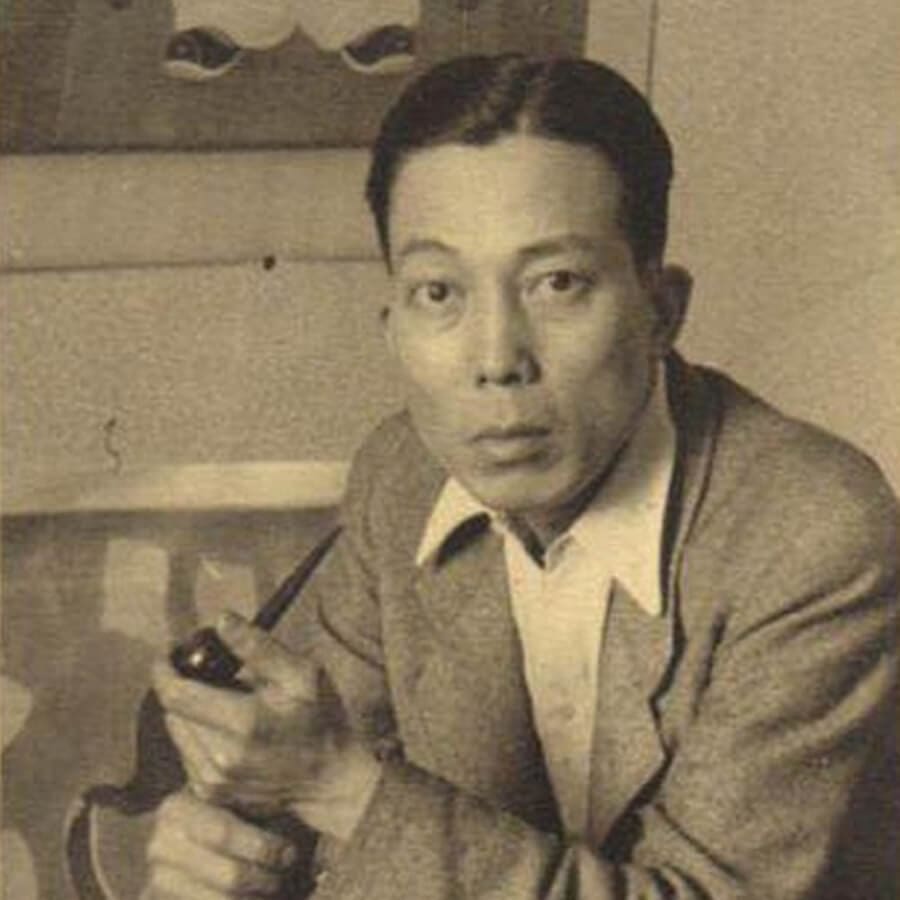Mai Trung Thứ: An Icon of Modern Vietnamese Art
Mai Trung Thứ stands as a monumental figure in modern Vietnamese painting, renowned for his silk artworks that vividly capture the essence of Vietnam’s cultural identity. Born in the early 20th century, he was not only a painter but also a photographer and filmmaker, preserving his homeland’s imagery through a deeply artistic lens. His contributions have left an indelible mark on Vietnam art galleries. This article delves into the lesser-known aspects of his life, career, and the timeless artworks that continue to inspire, offering a comprehensive look at his legacy in the global art world.
Biography of Mai Trung Thứ: From Hải Phòng to the City of Light
Mai Trung Thứ was born on November 10, 1906, in Do Nha village, Tân Tiến commune, An Dương district, Kiến An province (now part of Hải Phòng city). His father, Mai Trung Cát, was a high-ranking official, serving as the Governor of Bắc Ninh, providing the family with a strong educational foundation. From a young age, Mai Trung Thứ showed a profound passion for art, particularly painting. Growing up in an environment rich with Vietnam’s cultural traditions—rivers, villages, and the simplicity of rural life—these elements became the cornerstone of his artistic inspiration.
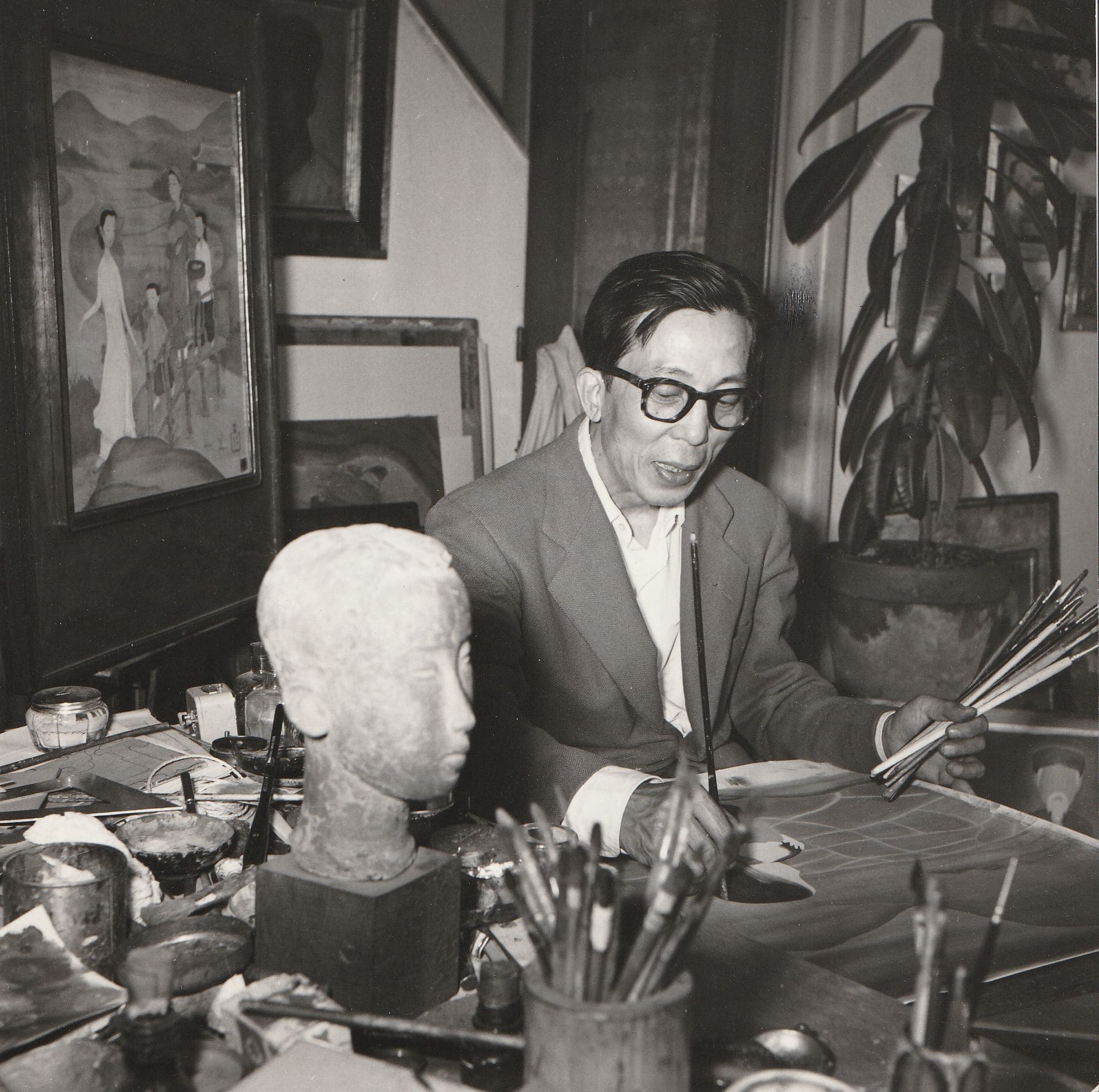
In 1925, at the age of 19, Mai Trung Thứ passed the entrance exam for the inaugural course of the Indochina School of Fine Arts (now Vietnam University of Fine Arts). This marked a pivotal moment in his biography, as he studied under French instructors like Victor Tardieu and Joseph Inguimberty. The school emphasized blending Western techniques with Eastern aesthetics, encouraging students to preserve their cultural roots. During this period, Mai Trung Thứ experimented with oil painting, capturing rural Vietnamese life, before transitioning to silk painting—the medium that would define his legacy.
His personal life was intertwined with Vietnam’s historical upheavals. He married and raised a family, but his dedication to art remained paramount. In 1937, after participating in the Paris Trade Fair, he chose to settle in France, the “City of Light,” where he lived and created for the rest of his life. Despite being far from Vietnam, his heart remained tethered to his homeland, as evidenced by his extensive collection of materials on President Hồ Chí Minh and Vietnamese culture. In 1974, at the invitation of the Democratic Republic of Vietnam, he returned to his homeland after 38 years, a deeply emotional homecoming. Tragically, Mai Trung Thứ passed away suddenly in 1980 from a heart attack at age 75, and was laid to rest near Paris.
The biography of Mai Trung Thứ is not just the story of an individual but a reflection of the first generation of Vietnamese artists embracing modern art. His contributions were honored in 2014 when a street in Hải An district, Hải Phòng—his hometown—was named after him. His life reveals a romantic, optimistic artist who preserved Vietnam’s cultural soul through his work.
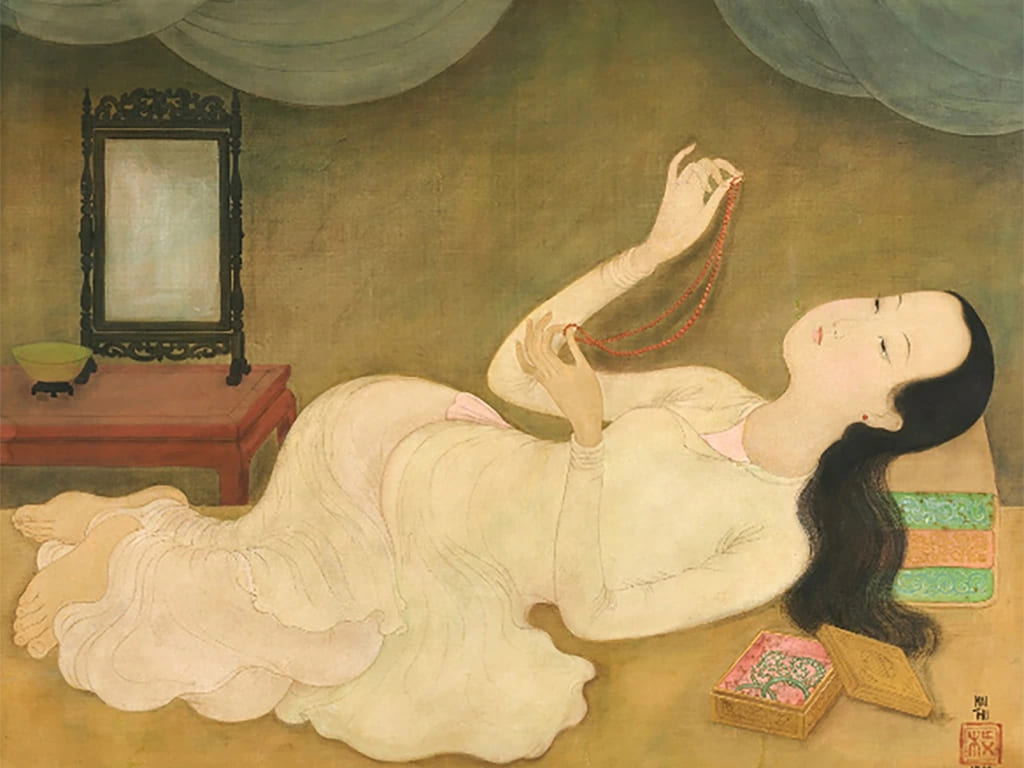
Career of Mai Trung Thứ: From Student to International Master
Mai Trung Thứ’s career, spanning over half a century, is a testament to his evolution from a talented student to a globally recognized master. He was part of the “European Quartet,” a group of Vietnamese artists who gained fame in Europe, alongside Lê Phổ, Vũ Cao Đàm, and Lê Thị Lựu.
Early Career and Teaching in Vietnam
After graduating from the Indochina School of Fine Arts in 1930, Mai Trung Thứ was appointed as a painting instructor at Quốc Học School in Huế. This period was crucial in shaping his career, as he honed his silk painting techniques. The poetic landscapes of Huế—Sông Hương River, Ngự Bình Mountain, pagodas, and royal tombs—ignited his creativity. He produced a series of works depicting gentle Huế women and serene landscapes, characterized by vibrant colors and lively compositions.
In the 1930s, Mai Trung Thứ began showcasing his works at international exhibitions, including Rome (1932), Milan and Naples (1934) in Italy, Brussels (1936) in Belgium, and San Francisco (1937) in the United States. These events not only highlighted his talent but also introduced modern Vietnamese painting to the Western world, establishing him as a pioneer.
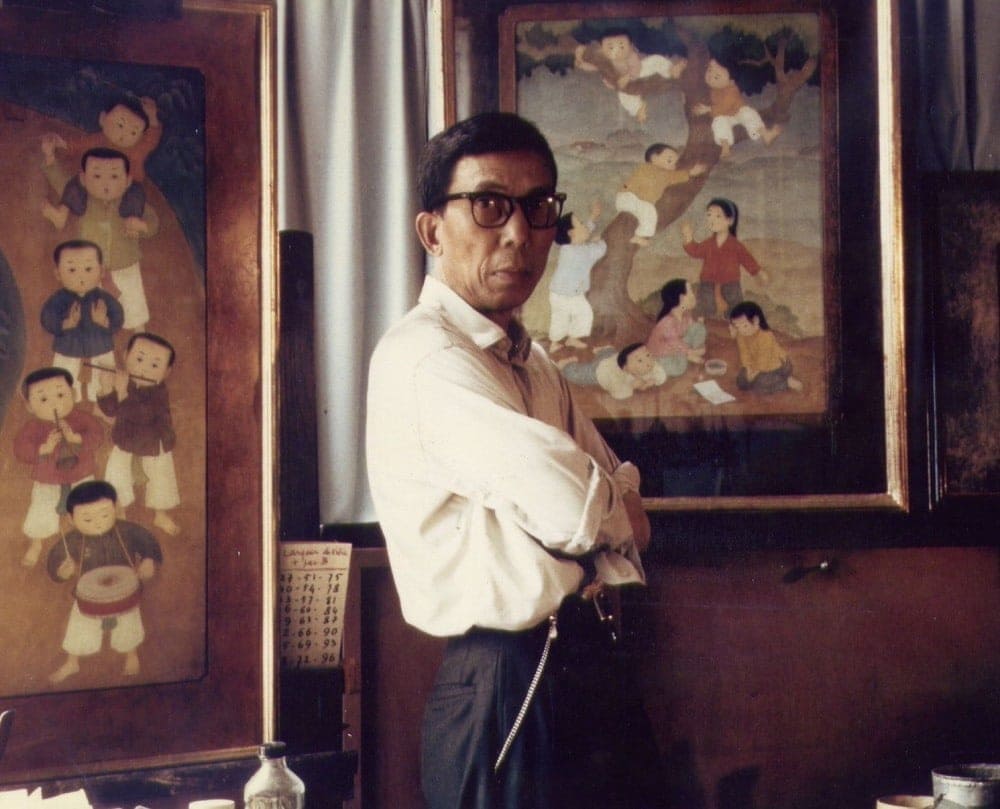
Life in France and Global Exhibitions
In 1937, Mai Trung Thứ settled in Paris, where he continued to create works centered on familiar themes: Vietnamese women, children, rural landscapes, trees, and pagodas. His silk paintings, using gouache on silk, achieved a remarkable depth and softness, earning him acclaim. His participation in numerous European exhibitions further popularized Vietnamese art abroad.
Beyond painting, Mai Trung Thứ was a skilled photographer and filmmaker, amassing a valuable collection of materials about Vietnam. His 1974 return to Vietnam underscored his unwavering love for his homeland, despite decades abroad. His multifaceted career—spanning painting, teaching, photography, and filmmaking—demonstrated his commitment to preserving Vietnamese culture.
Mai Trung Thứ’s career ended with his passing in 1980, but his legacy endures. He mentored artists like sculptor Điềm Phùng Thị and influenced generations of painters through his innovative approach.
Notable Works of Mai Trung Thứ: Masterpieces Infused with Vietnamese Soul
Mai Trung Thứ’s artworks are celebrated for their focus on women, children, and daily life, imbued with Vietnam’s traditional culture. His use of bright colors and fluid lines creates a poetic, romantic atmosphere that resonates deeply with viewers.
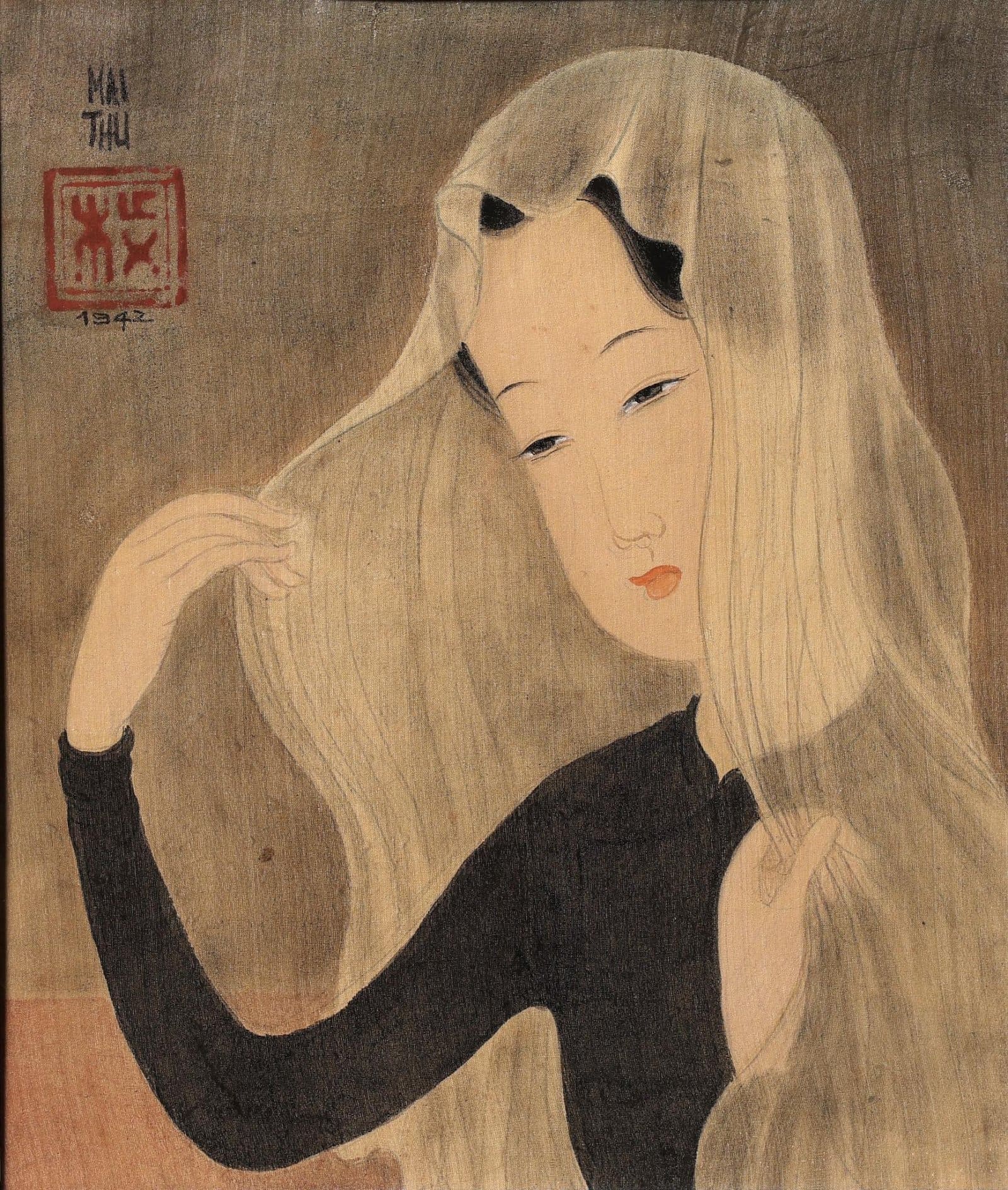
Women and Children in Mai Trung Thứ’s Silk Paintings
Mai Trung Thứ often portrayed the gentle, elegant beauty of Vietnamese women. His most iconic works include:
- Tiệc Trà: This painting depicts young women conversing over tea, adorned in traditional nón lá (conical hats) and áo dài (Vietnamese national dress). The harmonious colors evoke the tranquility of everyday life.
- Chuyện Trò: Portraying two women chatting by a river, this work captures the poetic charm of Huế. The delicate silk layers showcase Mai Trung Thứ’s mastery, creating depth and emotion.
- Thiếu Nữ Huế: A portrait of a Huế maiden with a demure expression, set against a riverine backdrop. This painting has been featured in numerous international exhibitions.
- Trẻ Em Việt Nam: A joyful depiction of children playing, emphasizing innocence and vitality.
These works highlight Mai Trung Thứ’s ability to capture the grace and simplicity of Vietnamese life, making them timeless treasures.
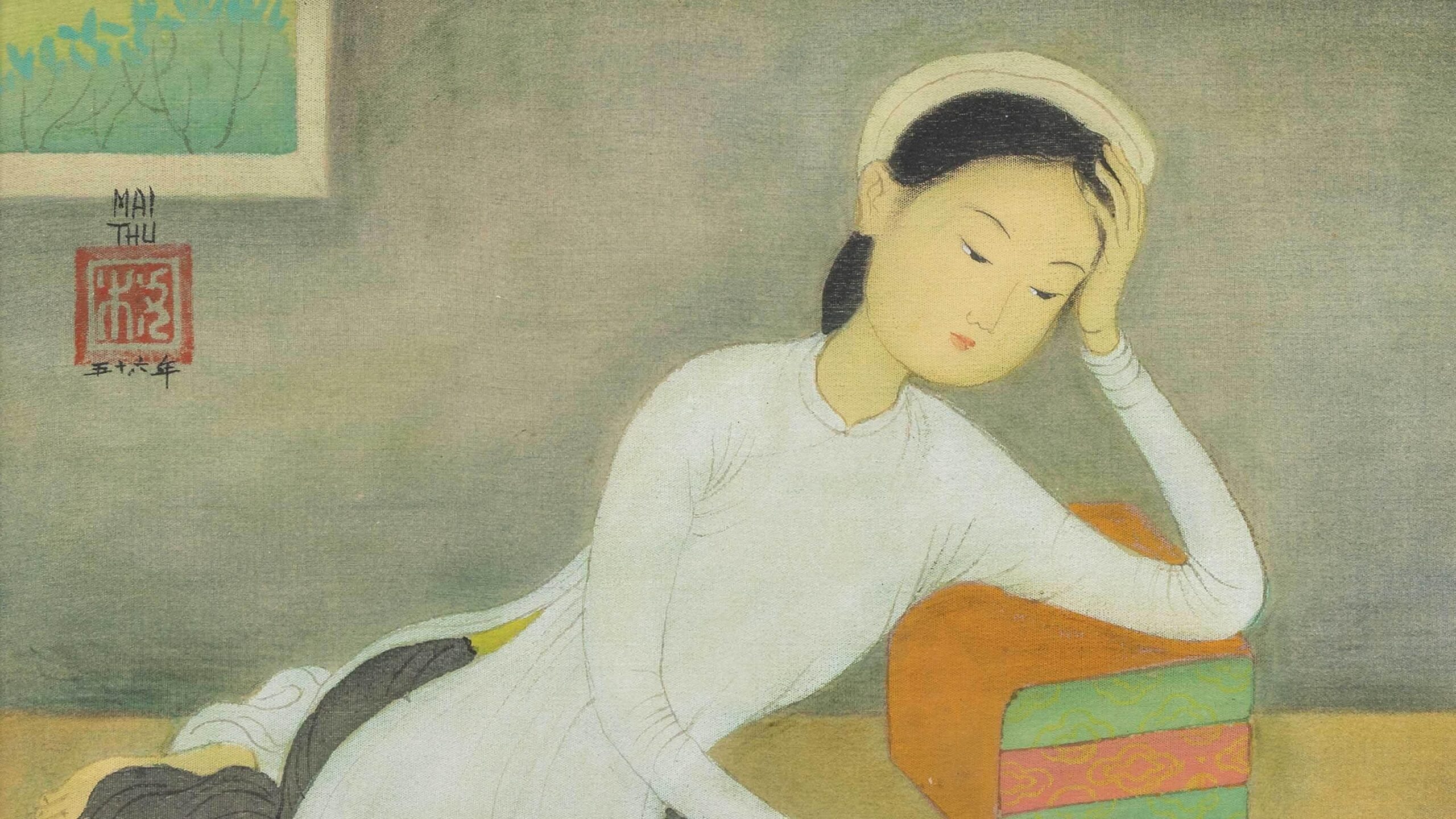
Landscapes and Daily Life in Mai Trung Thứ’s Works
Mai Trung Thứ also excelled in painting Vietnamese landscapes, from rural villages to pagodas. A standout work is Phụ Nữ Đội Nón Lá Bên Sông (1937), a 98x71cm oil painting depicting women washing clothes by a village pond, blending traditional imagery with Western techniques.
Another masterpiece, Chân Dung Cô Phượng, set a record when auctioned for 3.1 million USD in 2021. This painting exemplifies his finesse in combining color and emotion, portraying a woman with striking expressiveness.
Mai Trung Thứ’s works are not only visually captivating but also carry profound cultural value, offering Western audiences a window into Vietnam’s soul.
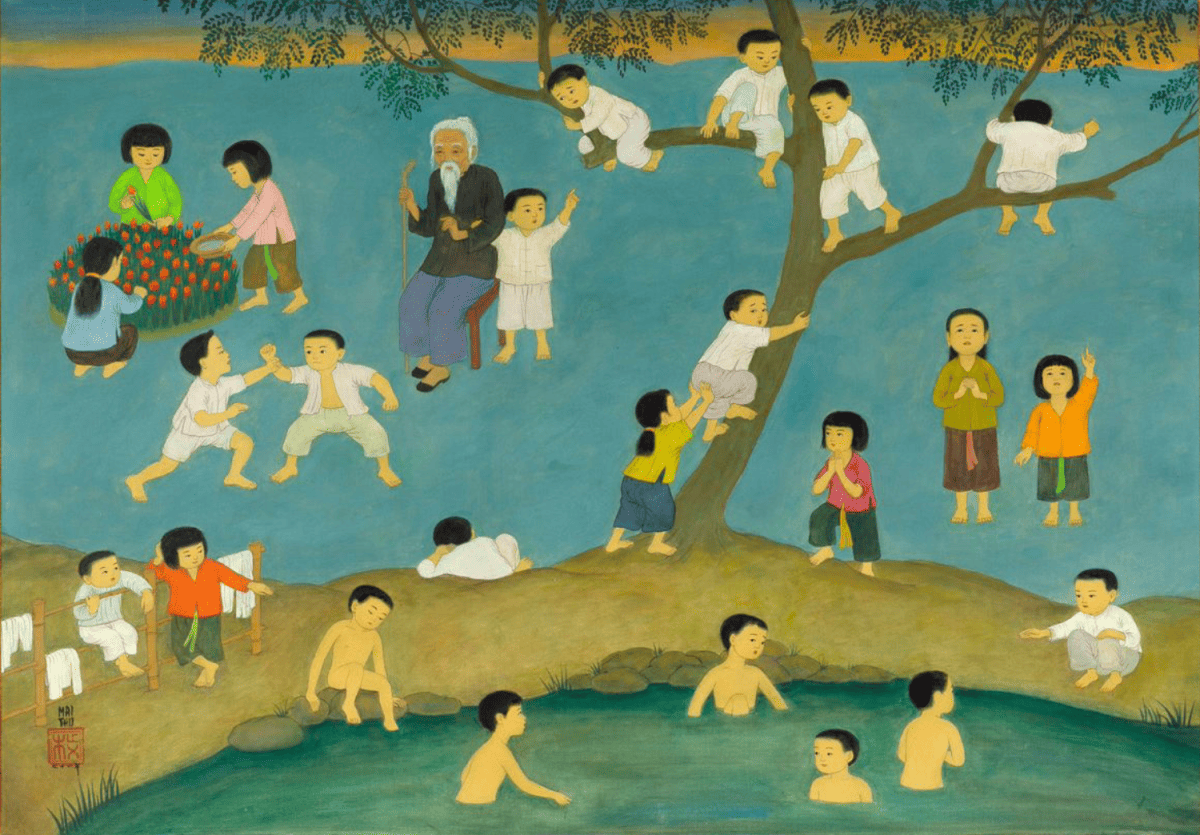
Artistic Legacy of Mai Trung Thứ: Shaping Modern Vietnamese Art
The artistic legacy of Mai Trung Thứ continues to inspire generations of artists. He played a pivotal role in shaping modern Vietnamese painting by harmonizing Western techniques with Eastern aesthetics. His silk paintings became a hallmark of Vietnamese art, influencing contemporaries like Tô Ngọc Vân and Nguyễn Gia Trí.
Mai Trung Thứ also contributed to cultural preservation through his photography and filmmaking, amassing a rich archive of Vietnamese history. Today, exhibitions of his work in France and Vietnam draw thousands of art enthusiasts, affirming his global impact.
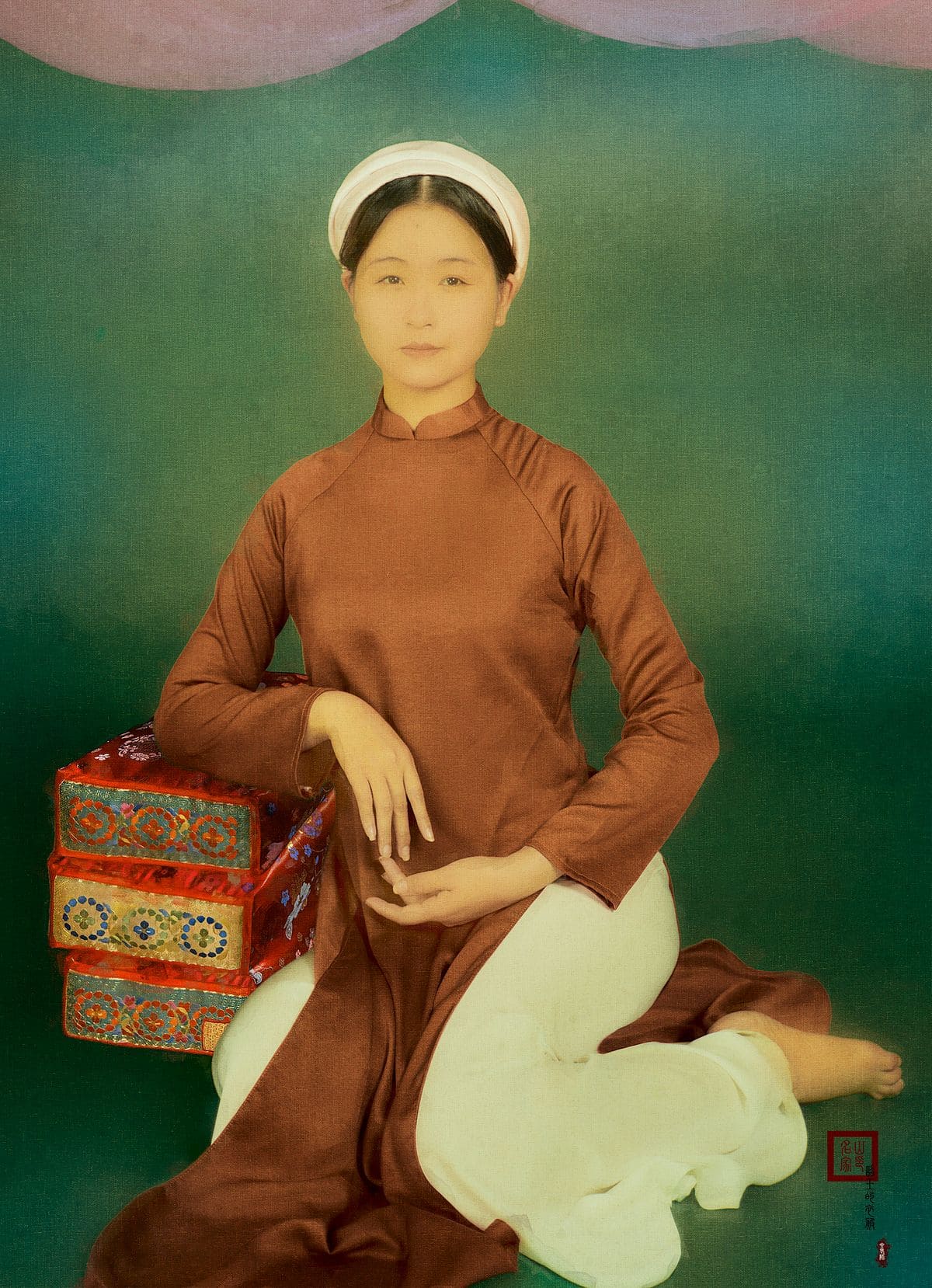
High-Value Paintings and Auction Records
In recent years, Mai Trung Thứ’s paintings have garnered significant attention at international auctions, reflecting their artistic and economic value. Notable examples include:
- Chân Dung Cô Phượng: Auctioned for 3.1 million USD in 2021, setting a record for Vietnamese art.
- Phụ Nữ Đội Nón Lá Bên Sông: Fetched a high price at Aguttes, France.
- Various works sold for hundreds of thousands of euros, including those featured in 2024 auctions.
These figures underscore the enduring appeal of Mai Trung Thứ’s legacy, attracting collectors worldwide.
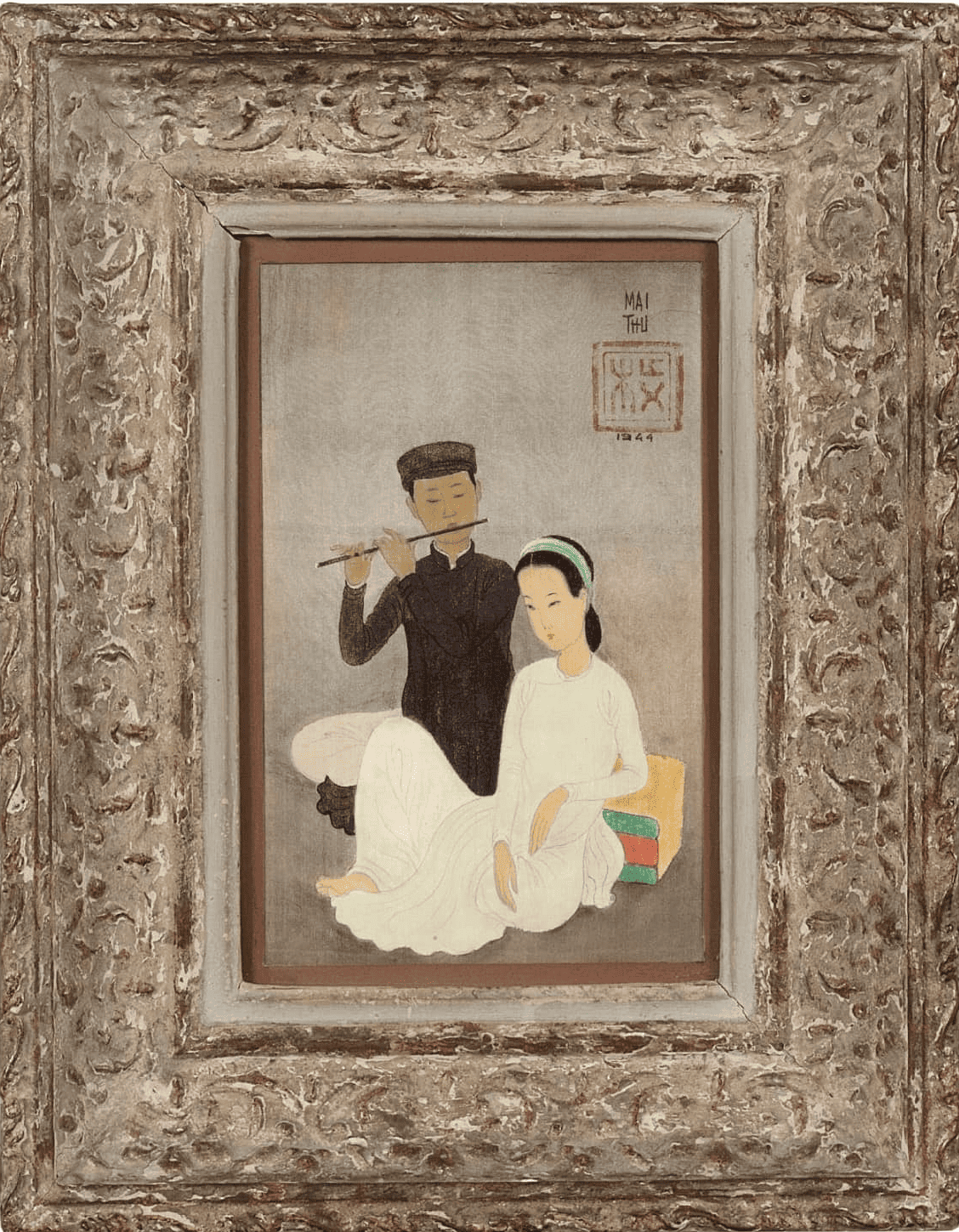
Mai Trung Thứ: An Eternal Symbol of Vietnamese Art
Mai Trung Thứ is more than a painter; he is a bridge connecting Vietnam to the world. Through his biography, career, and artworks, we see an artist who preserved Vietnam’s cultural essence despite living abroad. His silk paintings, infused with the spirit of rural life, women, and traditions, continue to resonate with art lovers globally. If you’re passionate about modern Vietnamese art, explore his works at museums or exhibitions. Mai Trung Thứ’s legacy will forever inspire future generations.

